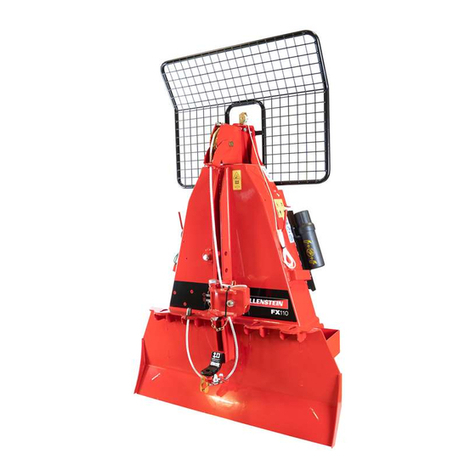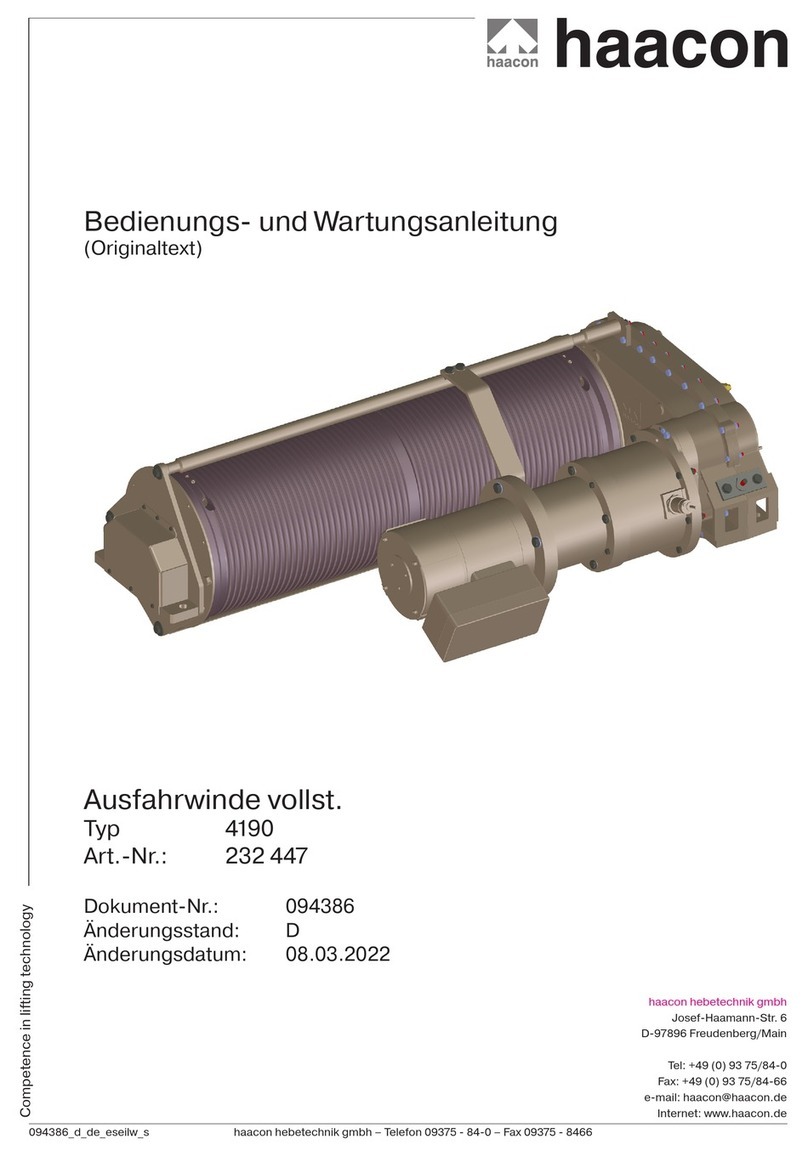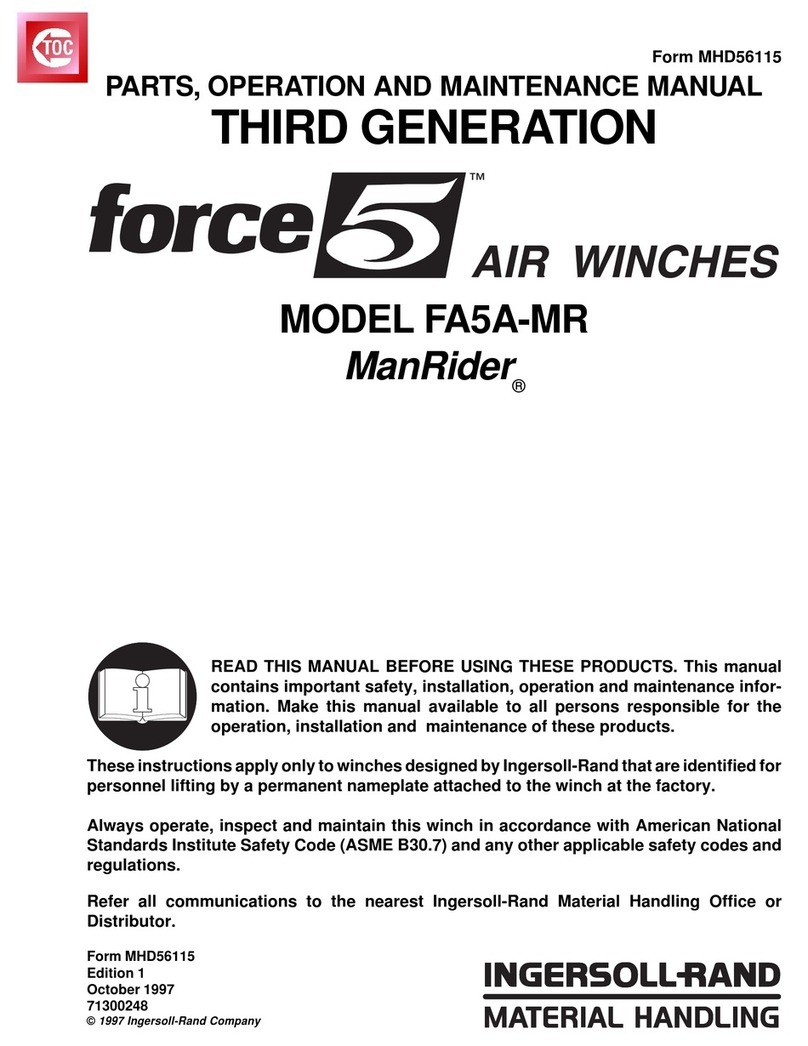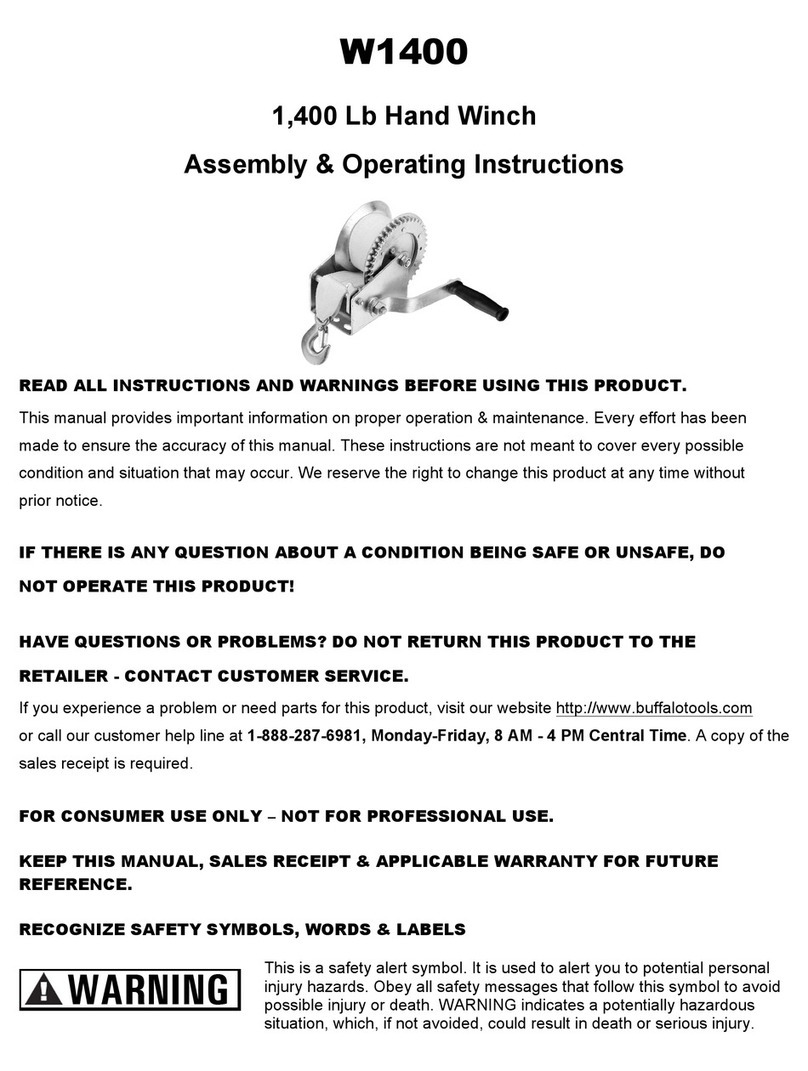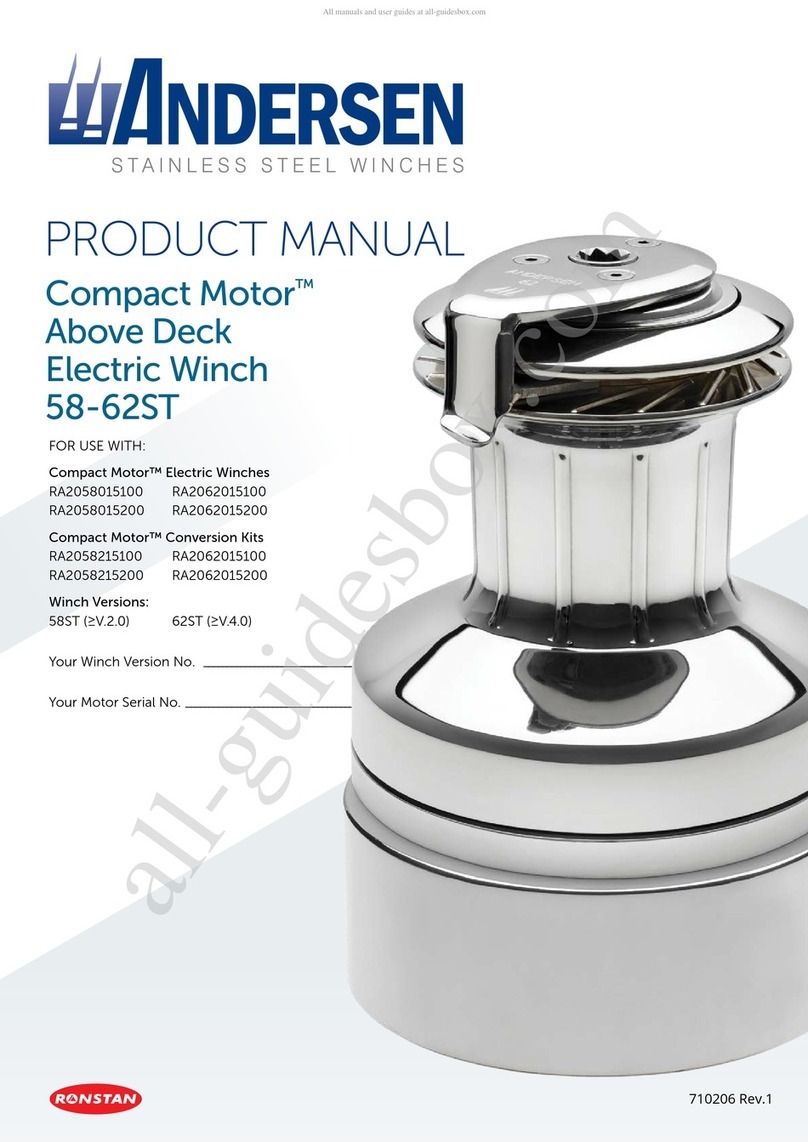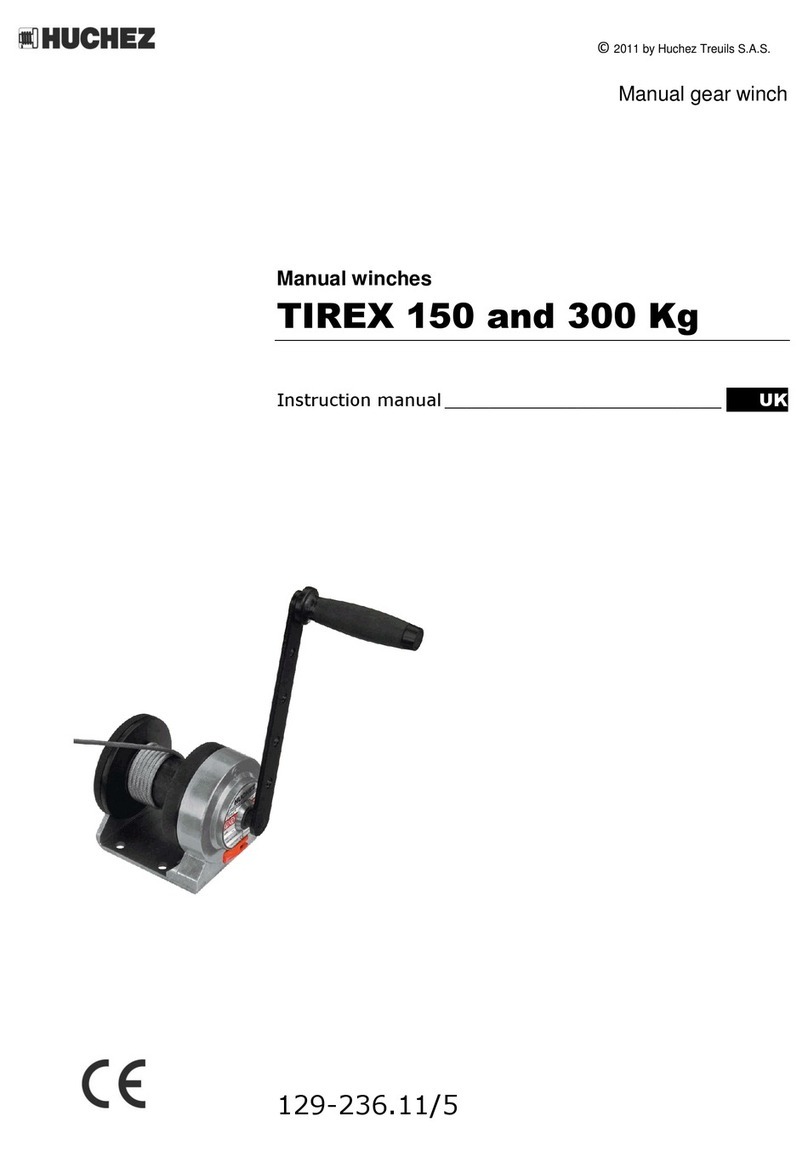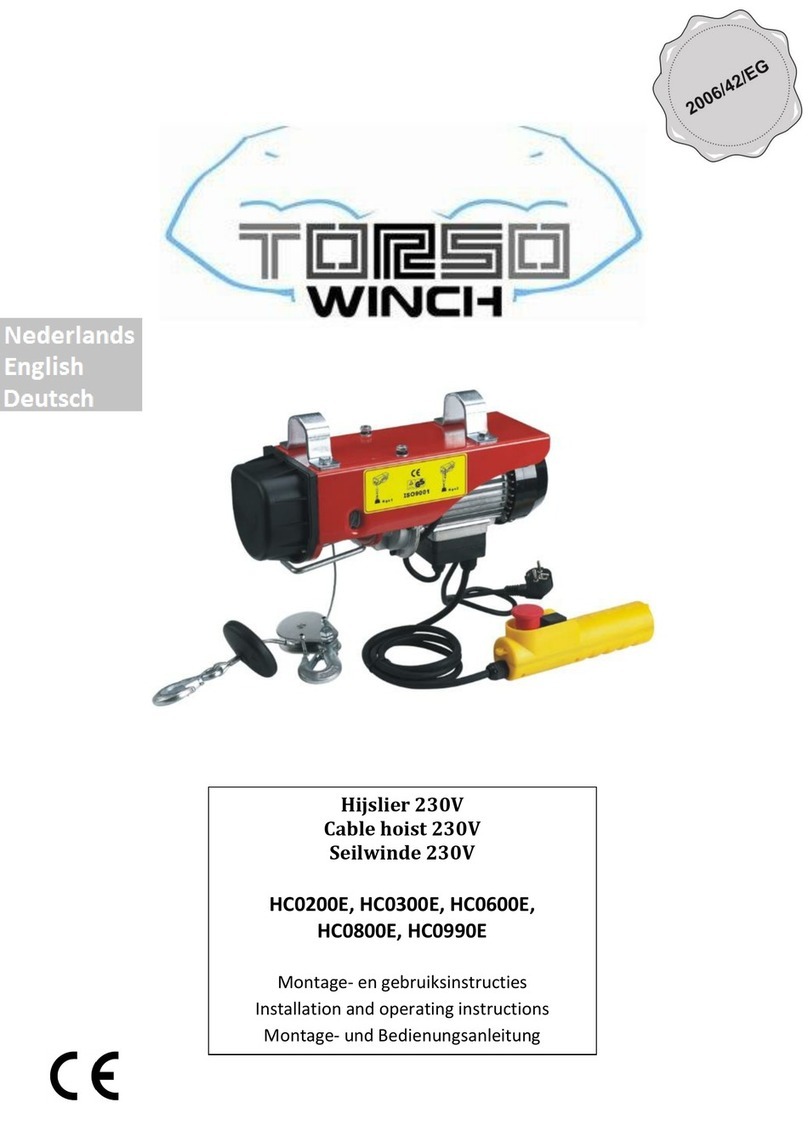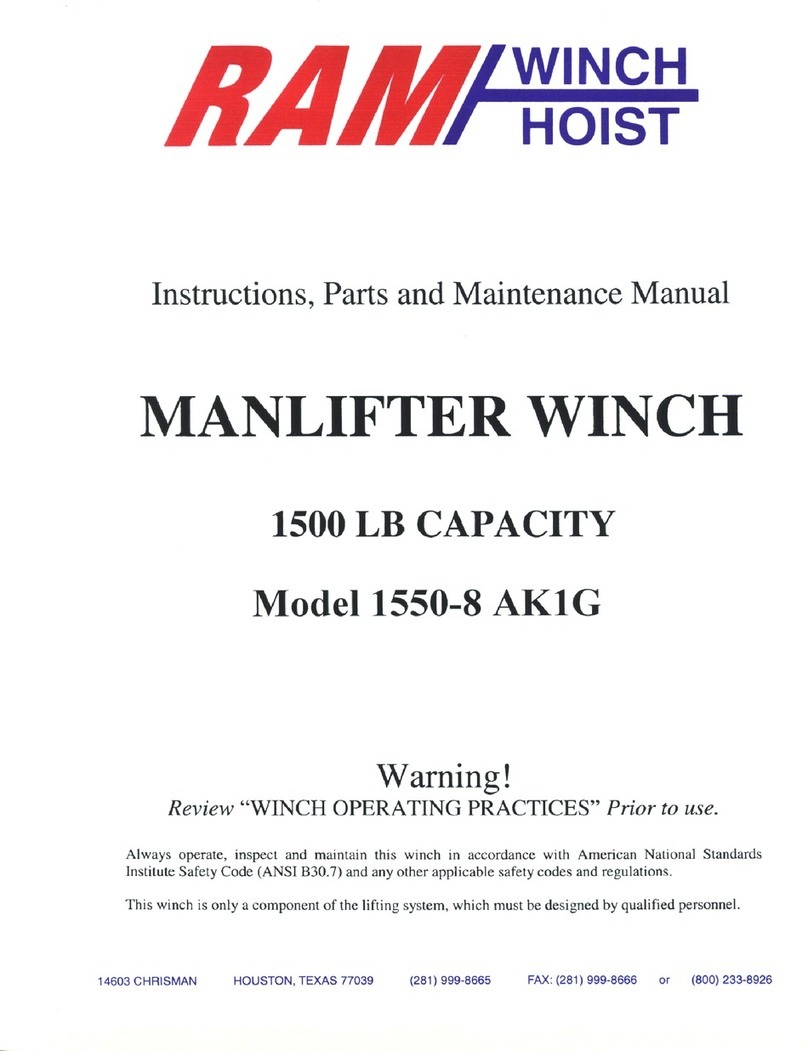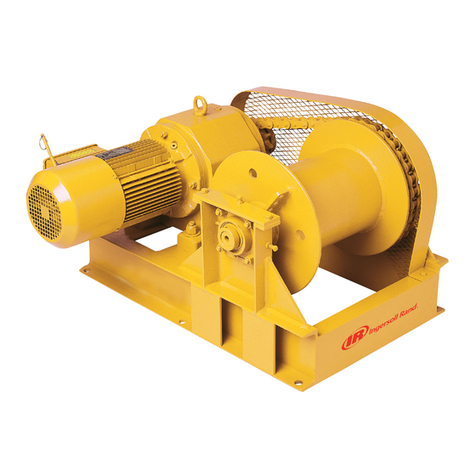
13
15. Do not exceed maximum line pull ratings shown in the tables in chapter 8 Specifications.
16. When spooling the cable ensure that the cable spools in the under-wind position with the
cable entering the drum from the bottom, not the top. To spool correctly you should keep a
slight load on the cable while pushing the remote button to draw in the cable. Walk toward
the winch not allowing the cable to slide through your hands. Do not let your hands get
within 12 in. of the winch while spooling. Turn off the winch and repeat the procedure until
a few feet of cable is left. Disconnect the remote control and finish spooling by rotating the
drum by hand with the clutch disengaged. Keep your hands clear of the fairlead and drum
while the winch is under power.
17. Do not use as a hoist. Do not use for overhead lifting.
18. Failure to heed these warnings may result in personal injury and/or property damage.
19. Use gloves to protect hands when handling the cable. Never let the cable slide through your
hands.
20. Never connect the cable back to itself, use a round sling/hoisting strap.
21. Apply blocks to the wheels of the vehicle when on an incline.
22. Duration of winching pulls should be kept as short as possible. If the motor becomes
uncomfortably hot to the touch, stop winching immediately and let it cool down for a few
minutes. Do not pull for more than one minute at or near the rated load.
23. If the motor stalls do not maintain power to the winch. Electric winches are designed and
made for intermittent use and should not be used in constant duty applications.
24. Never disengage the clutch when there is a load on the winch.
25. Use the hand saver hook when handling the hook for spooling or un-spooling the wire rope.
26. The winch and its all-derivative types are rated at rated capacity when spooling the first rope
layer on the drum. Overloading can damage the winch/motor/ or wire rope. For loads over
70% of rated line pull, we recommend the use of the pulley block/snatch block to double the
wire rope line. This will aid in two ways: a) reduce the number or rope layers on the drum, as
well as, b) reduce the load on the wire rope by as much as 50%. When doubling the line back
to the vehicle, attach to the frame or other load bearing part.
27. The vehicle engine should be kept running during operation of the winch to minimize battery
drain and maximize power and speed of the winch. If the winch is used for a considerable
amount of time with the engine off, the battery may be drained and too weak to restart the
engine.
28. Get to know your winch before you actually need to use it. We recommend that you set up a
few test runs to familiarize yourself with rigging techniques, the sounds your winch makes
under various loads, the way the cable spools on the drum, etc.
29. Inspect the wire rope and equipment before each use. A frayed or damaged rope must be
replaced immediately. Use only the manufacturer’s replacement rope with the exact
specifications.
30. Inspect the winch installation and bolts to ensure that all bolts are tight before each
operation.
31. Never connect the cable back to itself. This will cause cable damage. Always use a snatch
block, sling or chain of suitable strength as shown in the illustrations.
32. Store the remote control inside your vehicle in a place that it will not be damaged.
33. Any winch that appears to be damaged in any way, is found to be worn, or operates
abnormally shall be removed from service.





















